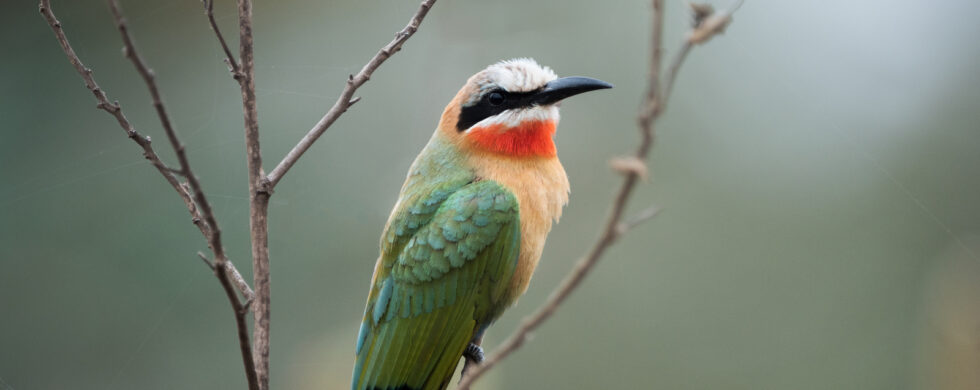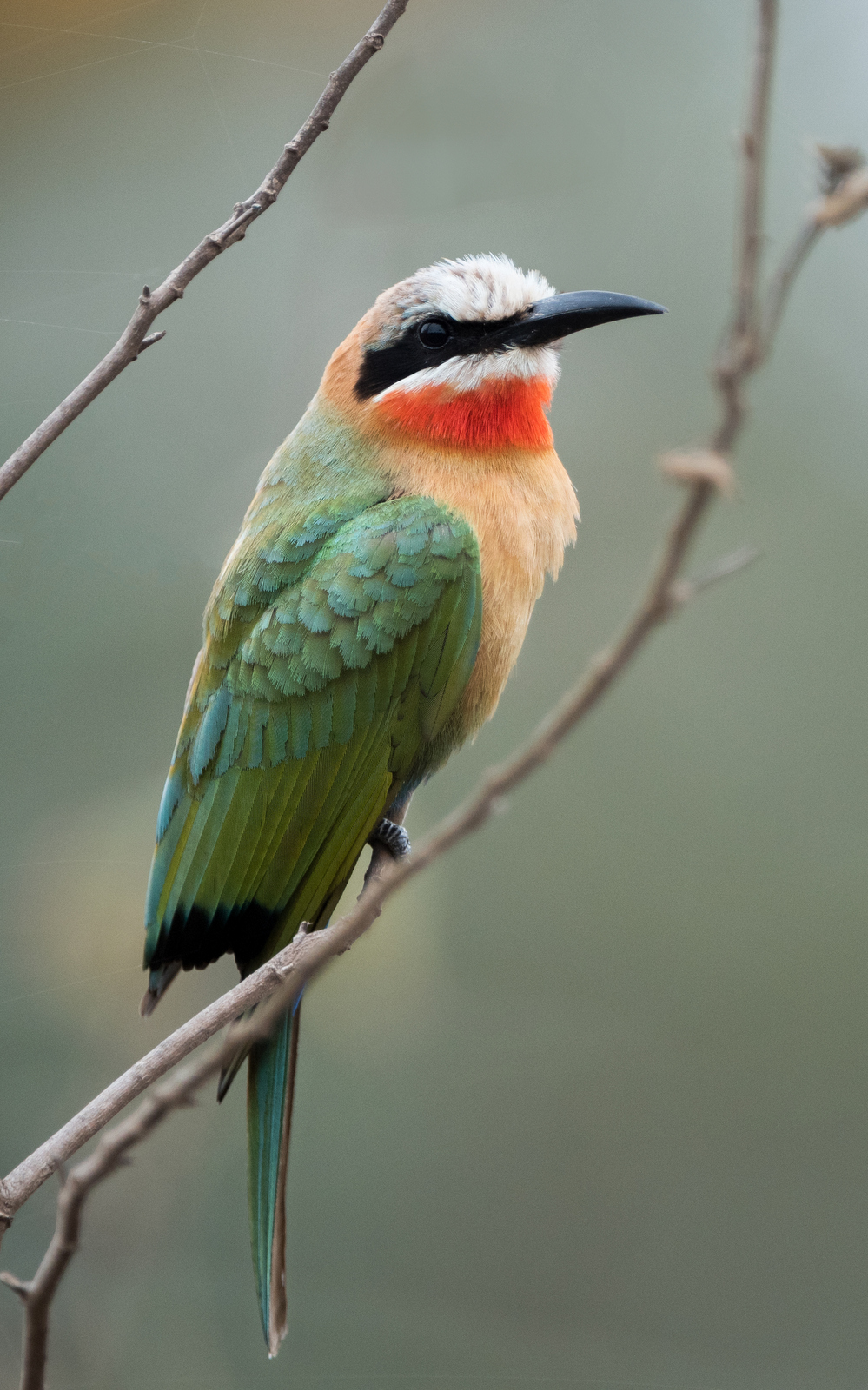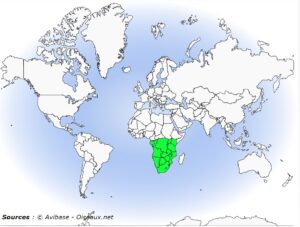
31
2023White-fronted Bee-eater
Shot of the Month – October 2023
This month a dash of color provided by the White-fronted Bee-eater (WFBE). I photographed this fellow in Kruger National Park in South Africa.
Bee-eaters (BEs) are a colorful family of birds with most having a predominance of green feathers highlighted or accented with of broad range of other hues depending on the species. These other colors can include red, white, cinnamon, rose, black, yellow, brown, gold, turquoise, olive, purple, grey, orchre and many others.
Our WFBE fits this mold in that his upper parts are green while he has a distinctive white forehead and bright red patch on his throat with cinnamon underparts. And like most bee-eaters the WFBE has a black mask across his eyes. The naming of bee-eaters, if not very imaginative, often indicates the color highlights for a given species. A few examples to give you a sense: Red-throated BE, Blue-headed BE, Black-headed BE, Red-bearded BE, Purple-bearded BE, Blue-cheeked BE, Cinnamon Chested BE, White-fronted BE, Rosy BE, Little Green BE. A few others are named based on their location: Australian BE, European BE, and Somali BE.
WFBEs can be found across most of sub-Saharan Africa including South Africa, Angola, Botswana, Burundi, DR Congo, Gabon, Kenya, Malawi, Mozambique, Namibia, Rwanda, Tanzania, Zambia and Zimbabwe.
All bee-eaters forgo building nests but rather dig holes in the side of cliffs or river banks. To create the nest the birds dig a long tunnel with an oval chamber at the end for the eggs.
Most bee-eaters are gregarious and often hang out together in large colonies. WFBE take this to the next level and their social structures are often described as some of the most complex found in the avian world. First, they gather in large colonies that can contain 100 individuals (or about 50 burrows). When conditions are good these colonies can reach 200 birds at a site. The colony is made up of socially monogamous, extended family groups with overlapping generations known as “clans.” The clans are usually made up of two to three related breeding pairs.
Non-breeding individuals, typically male offspring from previous years, become helpers to relatives and assist to raise their brood. A nest may have 1 to 5 helpers though only about half of the nests in the colony get this support. These helpers may contribute to digging the roosting or nesting chamber, to allofeeding the female, and incubating and feeding the young.
This intricate, and multi-layered social and support system significantly improves the likelihood that the chicks will survive to adulthood.
The White-fronted Bee-eater – a colorful, gregarious bird that really takes the saying “Birds of a feather flock together” to heart with great success.
Until next month….michael
See more beautiful bee-eaters in my previous posts:
Hey Carmine (Carmine Bee-eater)
One (or three) for the Road (Blue-cheeked Bee-eater)
A Dandy Little Flyer (Little Bee-eater)
Sources
Bee-eater (Wikipedia)
Bee-eater (San Diego Zoo)
White-fronted bee-eater (Wikipedia)
White-fronted bee-eater (Animalia)
Nikon D500, Nikon 200-400 mm (@400mm), f/4, 1/640 sec, ISO 500


